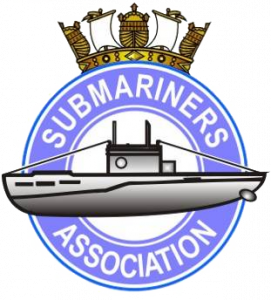A BRIEF HISTORY
Of Service and Sacrifice – A brief submarine service history by Iain Ballantyne.
PRE WORLD WAR I
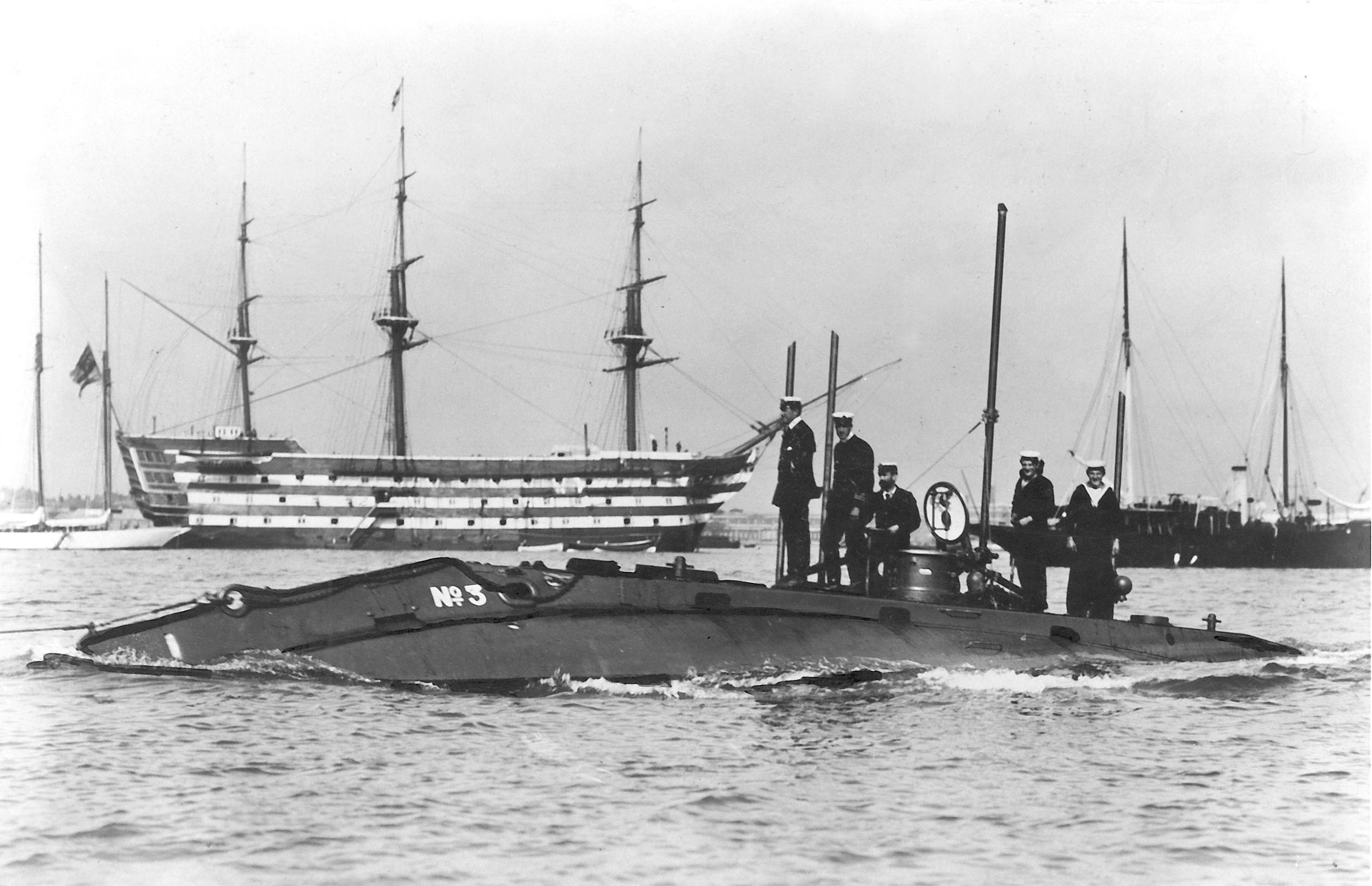
The vessels they operated were most underhand for being invisible when they attacked. Surely only small navies that could not afford big warships would think submarines a worthy weapon?
Yet, there were a few visionaries in the top ranks of the British naval establishment who recognised the war-winning possibilities offered by submarines, not least Admiral Sir John Fisher. “In their inception they were the weapons of the weak,” Fisher observed in 1903. “Now they loom large as the weapons of the strong.”
Despite the Royal Navy’s traditionalists being appalled at the idea of such impudent little craft sinking one of their magnificent battleships with a mere torpedo, prior to the First World War Britain engaged in an energetic programme of constructing the ‘boats.’
Even so, some of the men who served in the early British submarines were less than enthusiastic. They included Lieutenant Forster D. Arnold-Forster, who arrived at Barrow-in-Furness in 1901 to take command of HMS Holland I, the Royal Navy’s first submarine.
He was primarily motivated by the chance of an early command and extra ‘submarine pay’ and found his new command to be “like a very fat and stubby cigar.”
THE submariners may have been held at arm’s length by the surface navy, but they soon proved their worth in exercises where they showed how to sneak up on battleships and give them a nasty shock with a practice torpedo.
The valour expressed in just going to sea in one of these tiny craft was illustrated early, with several boats falling victim to being run down by merchant vessels, suffering petrol explosions or being overwhelmed by the sea flooding into them via open hatches. The casualty rate was shocking. Altogether 90 ratings and 18 officers were killed prior to the outbreak of the First World War in 1914.
It was no wonder that Winston Churchill, who would be First Lord of the Admiralty twice in the 20th Century, came to say of the submariner’s lot: “Of all the branches of men in the forces there is none which shows more devotion and faces grimmer perils than the submariners.”
WORLD WAR I

Even with the outbreak of the First World War, battleship admirals on all sides still refused to entertain the notion that it was possible for submarines to do more than merely poke about defending home harbours, or be towed out to sea and lurk in the approaches of enemy naval bases.
Tiny submarines simply did not have the range, the hard-hitting weaponry, or speed to be much of a threat – or so they thought. They were soon proved wrong, with British submarines pulling off extraordinary feats of daring in the Baltic, the Dardanelles and Sea of Marmara, preying on enemy sea trade and warships.
The first of 14 Victoria Crosses to be won by British submariners in the two world wars of the 20th Century went to Lieutenant Norman Holbrook, who took his rather elderly boat B11 into the Dardanelles and sank a Turkish battleship. Holbrook and his men endured a working environment described by a brother submariner as “a little like living inside the bonnet of a motor car.” Even when the boat was running on surface, with the hatch open, those inside B11 were invariably intoxicated from the noxious engine fumes, giving the appearance of being drunk.
LIKE the Germans, using their U-boats to attack sea trade in the Atlantic, the British were seeking to utilise submarines to outflank the stalemate on the Western Front, but similarly failed to secure the strategic effect desired.
For all that, the impact of small vessels seen as unimportant at the beginning of the conflict was so great by 1919 that it stirred up immense fear and loathing of what submarines might achieve in a future war. In the 1920s there were calls for them to be outlawed entirely, mainly due to the unrestricted fashion in which the Germans had waged war on sea trade.
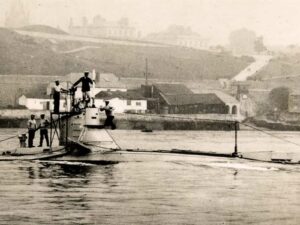
INTER-WAR
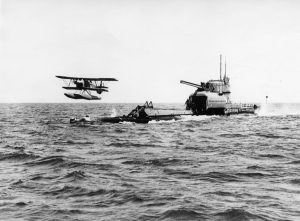
During the years of peace that followed, Britain’s submarines and their crews carried on with their business, despite their occupation remaining extremely hazardous.
With 58 submarines lost during the recent war and 1,174 officers and ratings killed, the inter-wars years were also not without their share of tragedy, with 13 submarines lost due to accidental sinking and 508 submariners and shipyard workers killed.
The First World War and its aftermath was a time of pushing back the boundaries of British submarine technology. This included experimental vessels such as the steam-powered K Class, which had funnels that were fine, provided they were ‘swung down’ and the holes sealed properly. If that was not the case disaster soon followed.
Then there was submarine HMS M2, which was ground-breaking for carrying a small floatplane inside a hangar. This large boat was lost in early 1932, off the Dorset coast, likely when the sea broke in through the hangar doors, taking down M2 and her 60 men to a watery grave.
WORLD WAR II

More Victoria Crosses and further sacrifice came during the Second World War. This time the British submariners saw action not only in the Atlantic and European waters but also in the Indian Ocean and Pacific.
Returning to run the Submarine Service during the early years of the new global conflict was one of its most renowned submarine captains, Max Horton. He had so outraged the Germans via his success with submarine E9 in the Baltic during the First World War they put a price on his head. Having survived at least one assassination attempt, more than 20 years later – as Rear Admiral Submarines – Horton was tasked with reinvigorating a service demoralised by heavy losses in the North Sea and the Mediterranean. Horton was, as one staff officer put it, “a tiger” and oversaw a period of great success against the Germans.
In the Mediterranean the Submarine Service played an important role in undermining the enemy’s bid to seize North Africa and the Suez Canal as a precursor to capturing Arabian oil fields. The heroic British submariners who patrolled the Mediterranean included Lieutenant Commander Malcolm David Wanklyn, who commanded HMS Upholder, destroying more enemy shipping than any other Allied submarine captain in the war. Wanklyn sank close to 140,000 tons and won the first VC awarded to a submariner in the Second World War. He and his men would pay the ultimate price. Upholder was lost with all hands in April 1942.
Another VC winner in the Mediterranean was Commander John Wallace Linton, captain of HMS Turbulent. His record of success in command of various submarines since 1939 saw him sinking around 100,000 tons of enemy shipping while also using Turbulent’s gun to destroy three trains. Linton, his men and Turbulent met their end in March 1943, claimed by a mine.
In all 88 British submarines and various other undersea craft were lost during the Second World War and 3,142 men killed.
COLD WAR
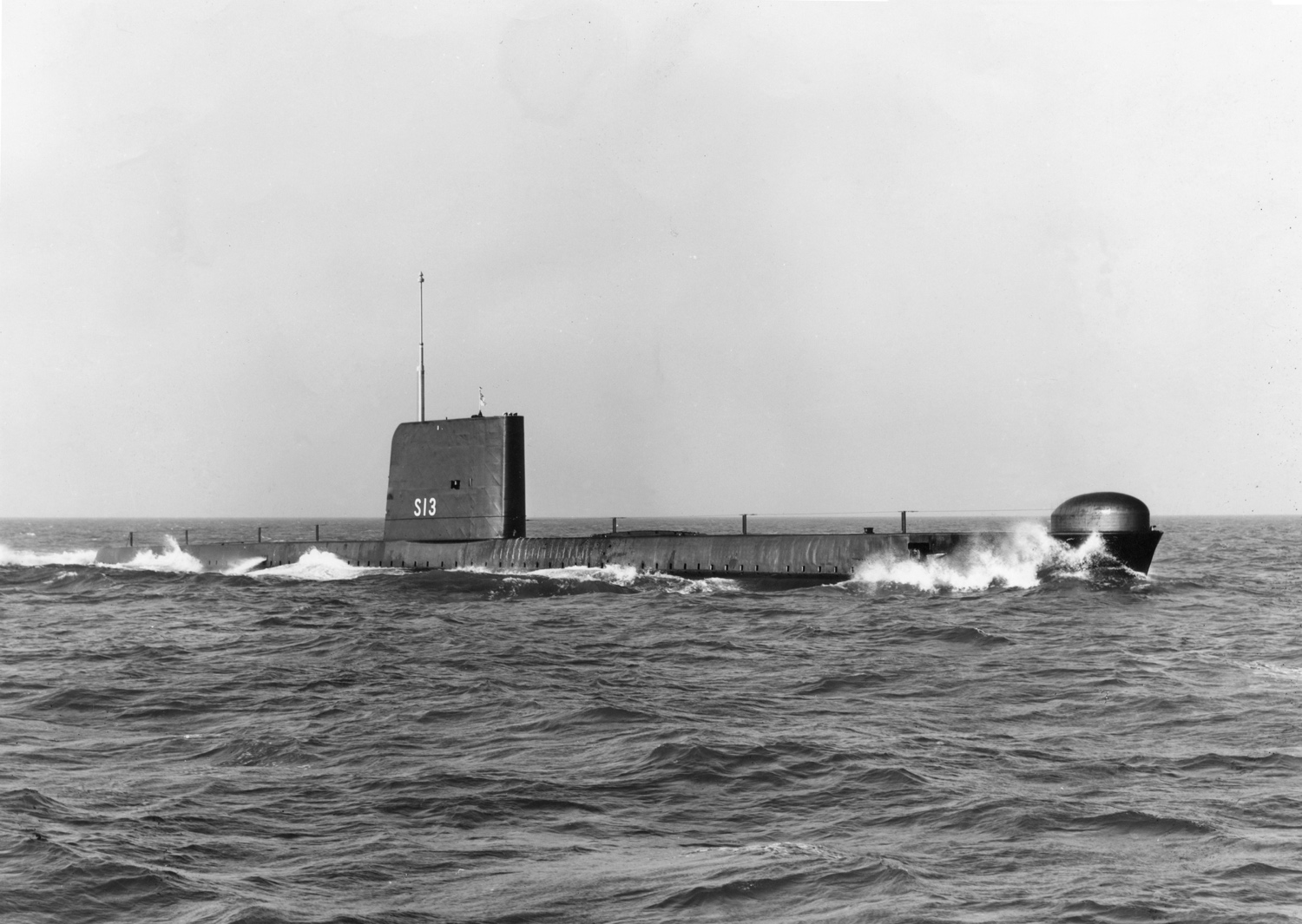
Having started the 20th Century as a tiny craft – sometimes posing more of a danger to its crews than to anyone or anything else – the Cold War saw titanic rivalry between East and West provoking a quantum leap in development of the submarine.
Submarines changed from predators, primarily engaged in attacking surface vessels to specialising in hunting other submarines and carrying nuclear-tipped ballistic missiles.
They were the new capital ships of the world’s navies. Hence the first of the UK’s nuclear-powered submarine, launched by Her Majesty The Queen on Trafalgar Day 1960, was named HMS Dreadnought.
That is not to overlook the valiant efforts of the smaller – far less powerful but equally hard-worked – diesel-electric submarines. Out of the three primary players in the Cold War undersea contest – the USA, the Soviet Union and Britain – it was the latter which most relied on diesels to do the sort of dangerous work the other two handed over to nuclear-powered boats.
The Royal Navy’s diesels would carry onshouldering the burden of the main undersea effort against the Soviets well into the 1960s, but it was their last period at the tip of the spear. The new nuclear-powered Fleet boats (SSNs, also known as hunter-killers) increasingly took the lead role in long-range surveillance and Anti-submarine Warfare (ASW) operations.
The diesels would still be used for close inshore surveillance, on training tasks and Special Boat Service (SBS) insertions, plus in waters close to the UK, including barrier patrols in the crucial Greenland-Iceland-UK (GIUK) gap.
Meanwhile, responsibility for providing the UK with its national strategic deterrent from the late 1960s until the mid-1990s was performed by Resolution Class vessels that carried Polaris Sea-launched Ballistic Missiles (SLBM).
The manner of sacrifice during the Cold War, which could have turned hot at any moment, for most submariners lay in the long separation from loved ones during weeks under the sea – both in the diesels and nuclear boats.
They prevailed in their silent and unseen mission and, thankfully, those immensely powerful nuclear-powered vessels never had to be used in anger against the Russians.
However, in one of those strange twists that geopolitics sometimes throws up, the nuclear-powered hunter-killer submarine HMS Conqueror during the Falklands conflict sank the Argentine cruiser ARA Belgrano. It remains the only instance in world history when a nuclear-powered submarine has attacked and sunk an enemy warship with torpedoes.
Lack of a hot world war did not mean people serving in, or working with, the Submarine Service avoided paying the ultimate price. Between 1945 and 2012 there were 450 submariners of all ranks and also civilians killed due to various causes. They included 152 men lost in the diesel-electric submarines Sidon, Affray and Truculent.
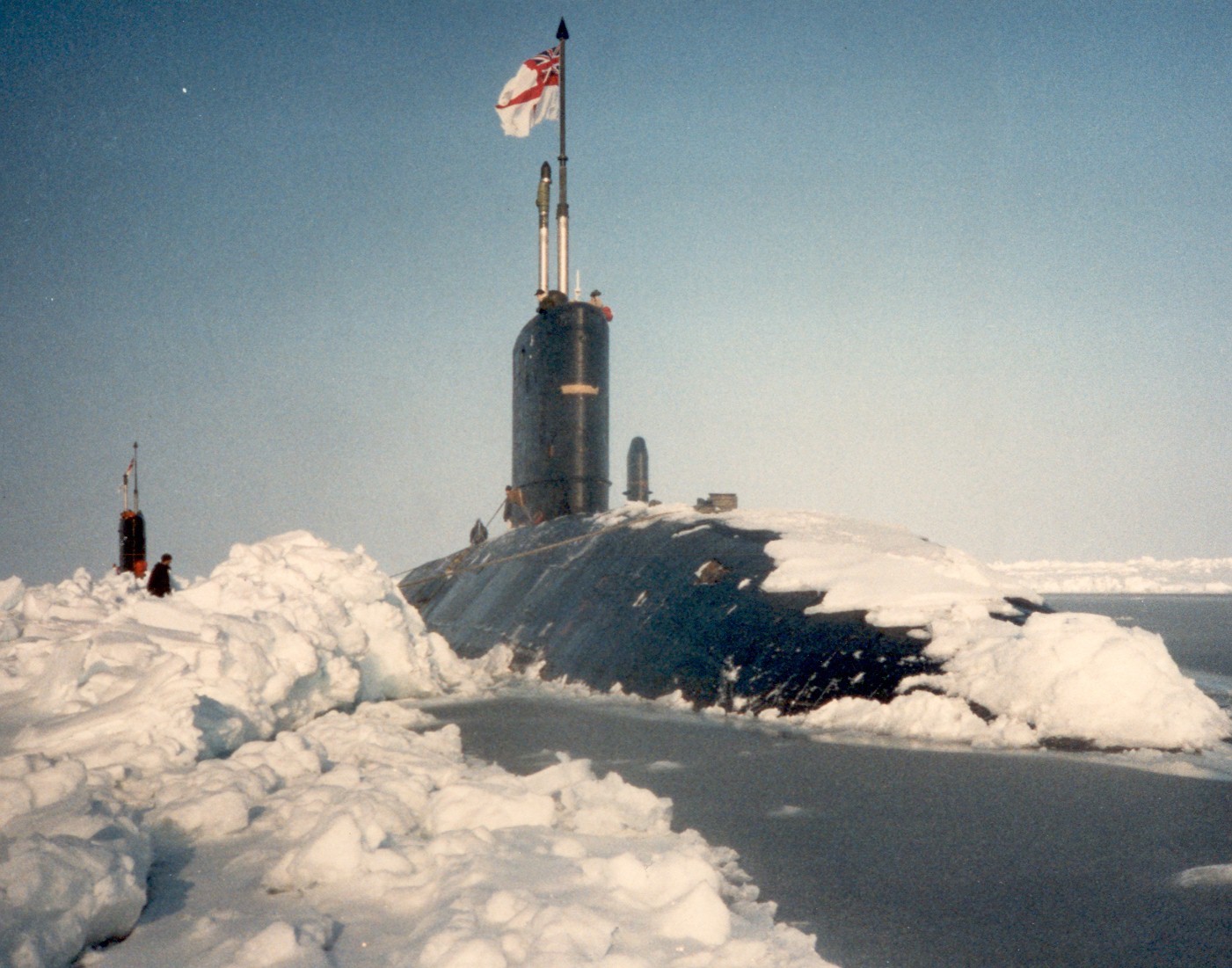
POST COLD WAR
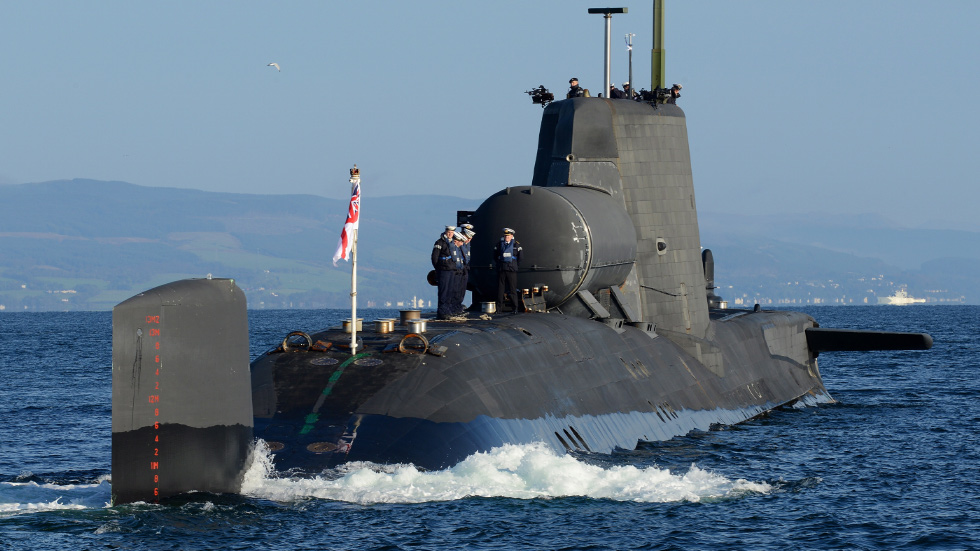
In the wake of the Cold War’s end, the urgent need to hunt other vessels disappeared as the Russian Navy’s submarines became largely confined to base.
A new role beckoned as the revolutionary Tomahawk Land Attack Missile (TLAM) became the weapon of choice for Western democracies – to punish terrorists or rogue regimes in the Middle East, North Africa and Balkans, via carefully targeted strikes.
The boats of the UK and the USA were to the fore in such post-Cold War operations, reaching up to 1,000 miles inland via the submarine-launched variant of TLAM.
Submarines were stitched into military-politico operations – abandoning some of their stealth to hit key targets by using targeting data sent via satellite Internet links.
There were still covert surveillance and reconnaissance missions to carry out.
For example, working alongside boats of allied nations – such as the USA, Holland and France – British submarines tracked the mother ships of pirates preying on merchant trade passing through the Indian Ocean.
Britain in the aftermath of the 9-11 attacks on the USA aimed to continually deploy a submarine on station east of Suez. The assigned unit used its periscope and other sensors to try and detect terrorists and their weapons being transported between Asia, Africa and Arabia (and vice versa).
Meanwhile, in recent years Russian submarines have again deployed frequently in the Atlantic and Mediterranean. They have even tried to shadow the UK’s Trident missile boats – successors to the Polaris vessels of the Cold War era – as they exit or return to HM Naval Base Clyde.
After a construction pause the Russians are turning out powerful new nuclear-powered submarines, as are the British, Americans, French, Indians and Chinese. Brazil will also soon be a nuclear-powered submarine operator while other nations continue to enhance their conventional submarine flotillas.
Meanwhile, the Australia-United Kingdom-USA (AUKUS) alliance aims to share submarine technology and help Australia build eight new hunter-killer submarines. This ambitious project may evolve in tandem with a new class of British attack boats to replace the Royal Navy’s current Astute Class SSNs.
At the same time, in Barrow – where young Lt Arnold-Forster gazed less than enthusiastically on the tiny cigar-shaped, 105 tons HMS Holland I more than a century ago – Dreadnought Class SSBNs are being built. With a dived displacement of 17,900 tons, they are bigger than any previous submarine constructed for the Royal Navy and will seek to maintain the nuclear deterrent well into the 21st Century.
The human element remains key of course. A willingness to be the silent and deep guardians still resides within the men and women of the Submarine Service, for all the hazards their life under the sea poses.
